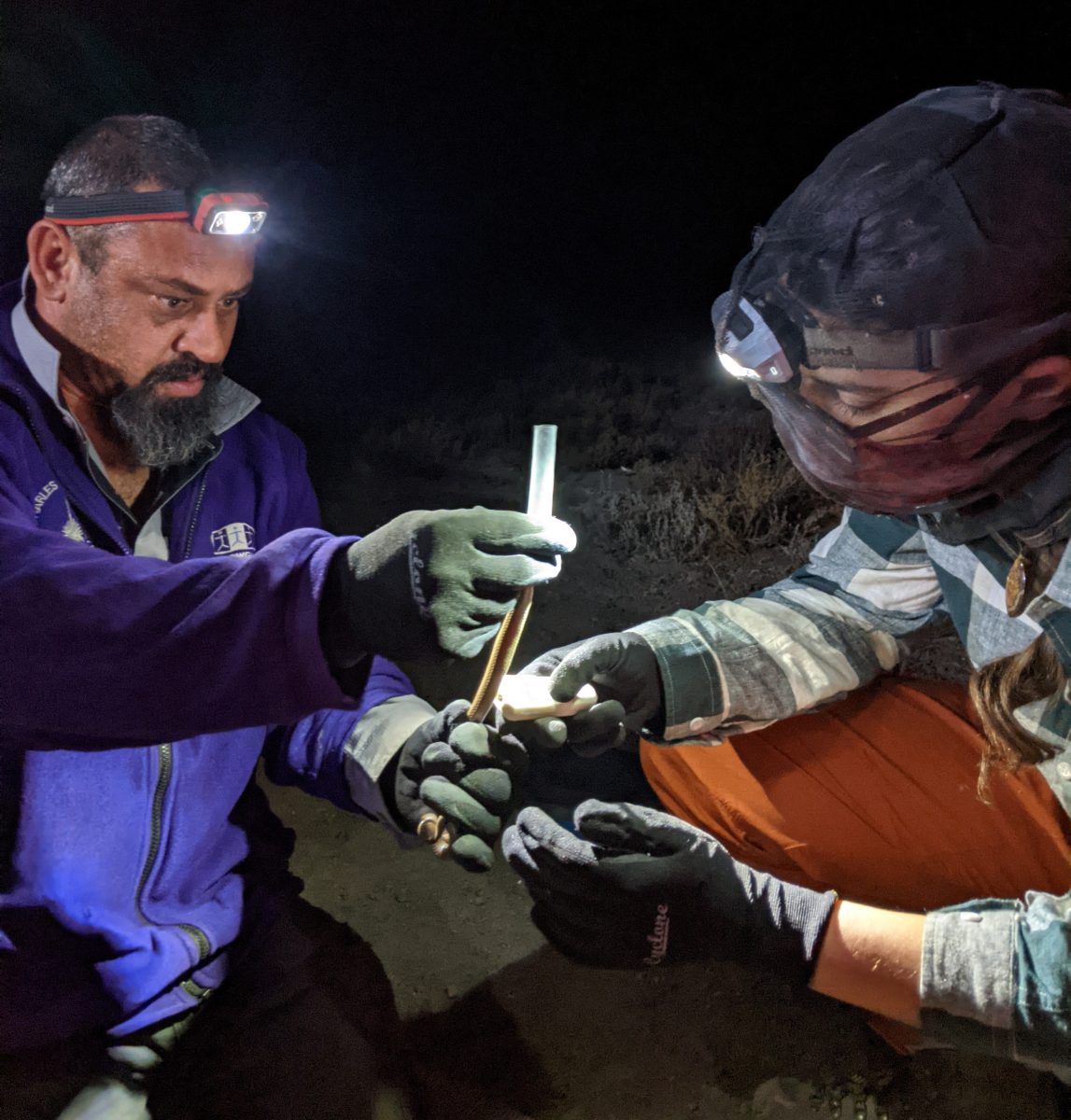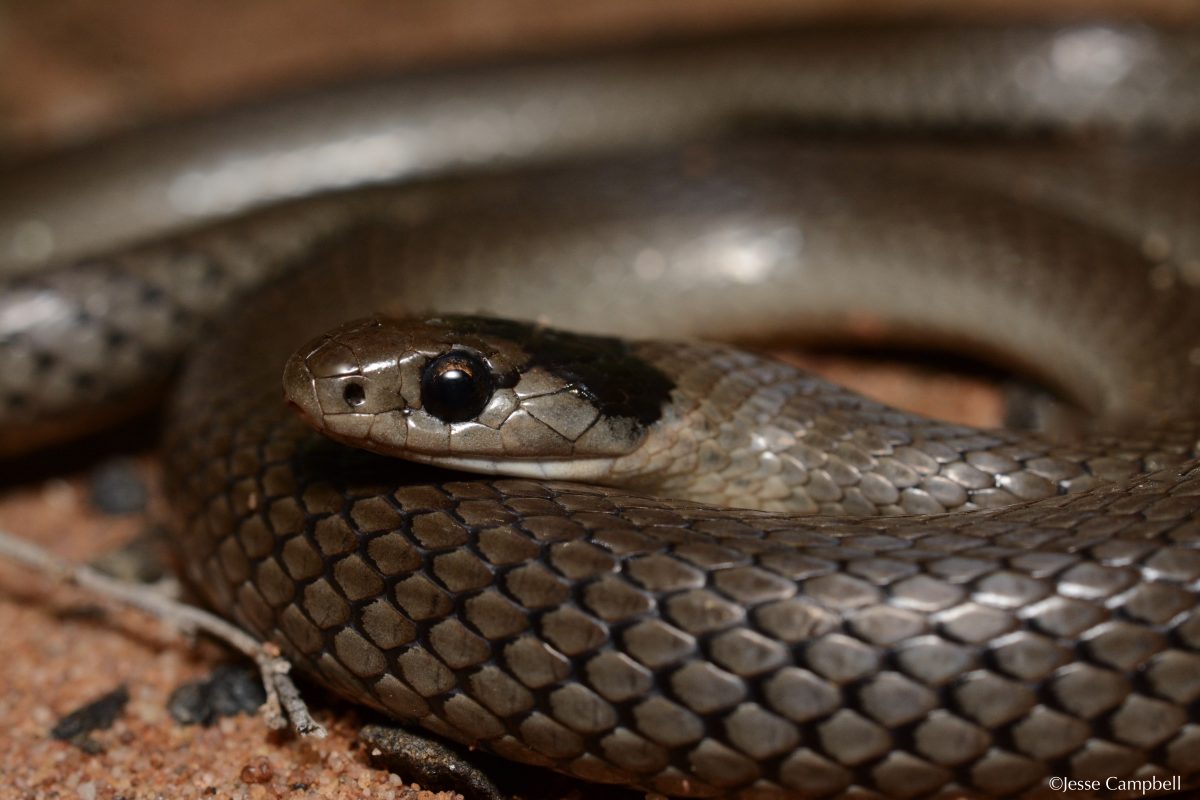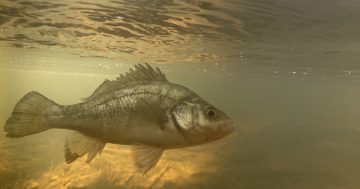
Charles Sturt University’s Dr Damian Michael (left), a lead researcher with the university’s Institute for Land, Water and Society, rediscovered the now-endangered grey snake. Photo: Supplied.
It was, put simply, a happy accident.
It was the first time in some 65 years there had been a genuine, recorded sighting of the rare grey snake.
It was, for Dr Damian Michael, a defining event as a lead researcher with Charles Sturt University’s Gulbali Institute for Agriculture, Water and Environment.
It is now a point of pride that his research has contributed to one of Australia’s rarest snakes being recognised as endangered – a key step towards greater protection for the reptile.
Dr Michael was out in the Lowbidgee catchment on another research project when he happened across the snake in 2018 – an event that triggered years of research and which, in October last year, led to the Federal Government listing it as an endangered species.
And late last year, the Queensland Government also listed the snake on its endangered species list, followed just last month by the New South Wales Government.
While there is some evidence of the snake’s existence stretching from the lower Murrumbidgee north to central Queensland, an area of up to 471,500 sq km, at most it is known to survive in just 164 sq km across that vast land mass.
From cane toads in Queensland to agricultural land clearing and a lack of water, Dr Michael said the snake faced a raft of threats, now officially recognised in NSW.
It follows the International Union for the Conservation of Nature adding it to its ”red list” of internationally endangered species in June 2017.
In NSW, records show the species occupies five separate areas, primarily in the lower reaches of the Gwydir, Namoi, Castlereagh, Macquarie, Lachlan and Murrumbidgee river systems.
Dr Michael said apart from its physical rarity, the snake was a fairly “cryptic” reptile, as it rarely emerged until nighttime, and even when it did, its physical characteristics could be easily confused with that of a juvenile eastern brown snake.
“It’s been a real surprise because I was out studying aquatic organisms, frogs, fish and birds in the catchment, and unless you really know what you’re looking at – and you have to catch them to be able to examine them properly – most people wouldn’t know what they’re looking at,” he said.
“It’s also one of the more susceptible (snakes) to cane toad poison, and the millennium drought would have had a big effect on it as it’s reliant on water and wetlands, and I think that would have caused a massive decline in numbers over those years.”
The NSW Threatened Species Scientific Committee’s decision says that while no data exists to accurately estimate the total population, it is likely to be low, with the largest number of snakes discovered in recent times at a single site – by Dr Michael and his team – after “optimal conditions” in 2020 just five.
“The primary threats to the grey snake are hydrological changes on floodplains due to water extraction, modified land use, changed flooding regimes, poisoning through the ingestion of cane toads and the impacts of feral pigs,” the decision reads.
The committee also wrote that in its opinion, the grey snake (or Hemiaspis damelii) was “facing a high risk of extinction in Australia in the near future”.

The Australian grey snake is now listed as endangered by the NSW Threatened Species Scientific Committee. Photo: Jesse Campbell.
Dr Michael’s latest research examined the ”factors affecting the use of modified floodplain wetlands by an endangered snake” and was released in March this year.
It showed the existence of the snake, which largely feeds on frogs, was strongly associated with floodplain vegetation and “to some extent, frequently inundated wetlands in southern NSW, suggesting water management agencies should incorporate threatened floodplain snake species into future wetland management plans”.
That research recommended improving environmental water flows to boost the outcomes not only for the grey snake, but numerous other species dependent on wetlands across the entire Murray-Darling Basin.
Dr Michael said despite the snake now being considered endangered not being great news for the future of the species, it also meant it may attract more attention towards greater protections and preservation efforts, and he was now planning to seek out more funding to further research the snake in a bid to improve its prospects of survival.
“It’s most often the cute and cuddly taxa [animals] that seem to attract the most funding for protection, but this is a good reminder that our reptiles and amphibians are just as important to a functioning, healthy ecosystem as any furry mammal is.”








